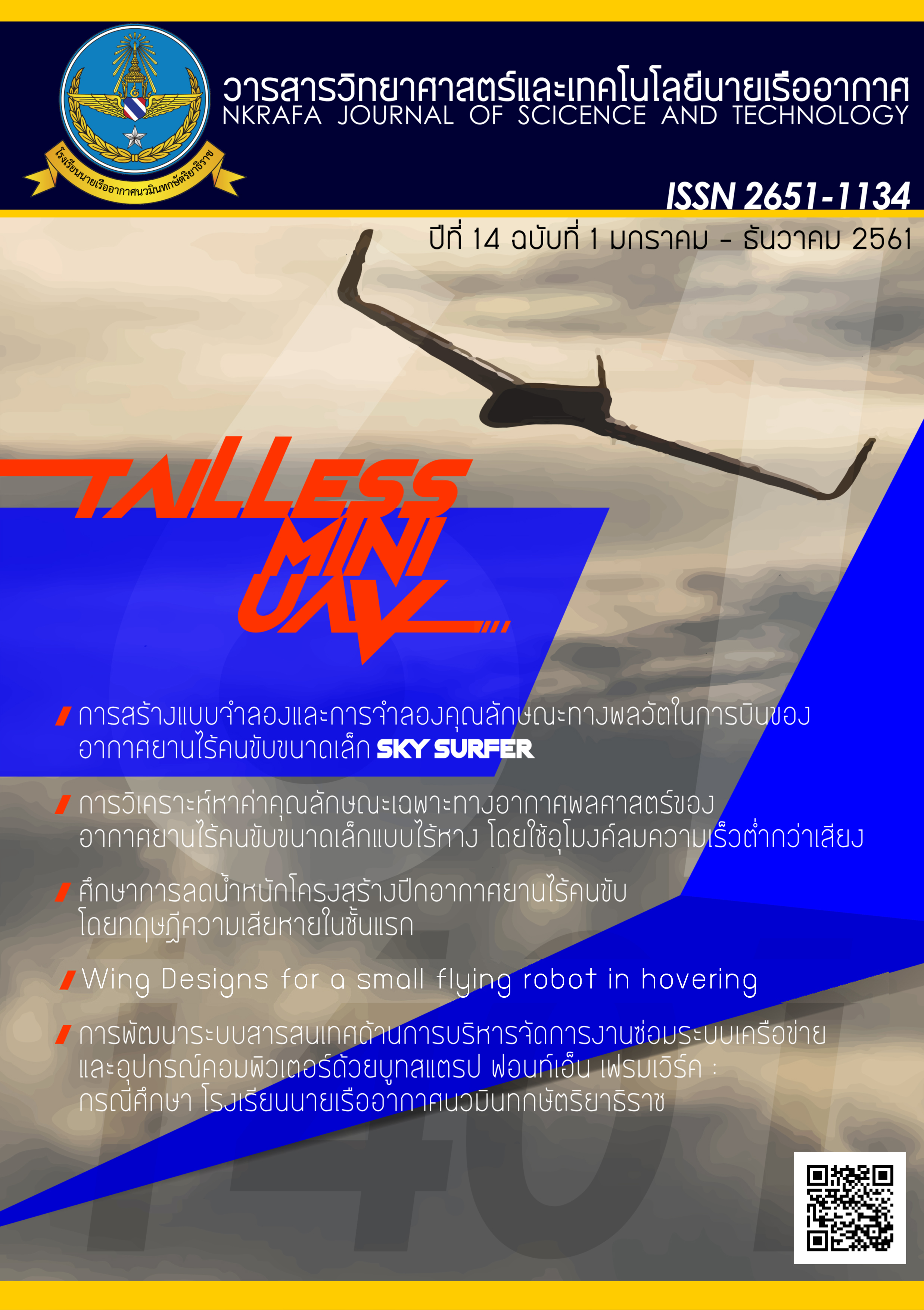Study of Load Carrying Capacity of Steel Bridges using Bolts and Welding for Connections
Main Article Content
Abstract
The purpose of this research is to analyze and test the load carrying capacity and the maximum deflection of steel bridges using bolts and welding for connections. Three types of steel bridges being tested are as follows: the first bridge with full welding at the connections, the second bridge with partial welding calculated from internal forces, and the third bridge with bolts connections. The researchers use a structural analysis program to analyze a selected bridge. The three bridges are assembled and tested for load carrying capacity and maximum deflection. Each structure has a length of 5.00 m., a width of 0.50 m., and a height of 0.8 m. The maximum allowable length for each member is 1.70 m. Each bridge is designed to carry a load of at least 1,000 kg applied to the bottom chords of the bridge. The results from the load test indicate that the bridge with full welding at the connections can carry a maximum load of 2,814 kg., the maximum deflection of 1.41 cm, and a factor safety of 2.8. The second bridge with partial welding at the connections can carry a maximum load of 1,923 kg., the maximum deflection of 1.54 cm and a factor safety of 1.9. The third bridge with bolts at the connections can carry a maximum load of 1,775 kg., the maximum deflection of 2.47 cm and a factor safety of 1.8. The benefit of this research is to understand the steel bridge design process and failure behaviors. The failure mode of each bridge indicates that the upper compressed chords buckles at the maximum load. In addition the second bridge with the partial welding has also a joint failure at the upper chord. This experiment is evidence that the full welding at the connections induces higher load carrying capacity in steel bridge structure.
Article Details
- Content and information in articles published in NKRAFA Journal of Science and Technology are comment and responsibility of authors of articles directly. Journal editorial do no need to agree or share any responsibility.
- NKRAFA Journal of Science and Technology Articles holds the copyright of the content, pictures, images etc. which published in it. If any person or agency require to reuse all or some part of articles, the permission must be obtained from the NKRAFA Journal of Science and Technology.
References
[2] วินิต ช่อวิเชียร และ วรนิติ ช่อวิเชียร. (2558). ส่วนโครงสร้างรับแรงดึงส่วนโครงสร้างรับแรงอัด และการต่อโครงสร้างโดยใช้ตัวยึด. กรุงเทพฯ : ว. ช่อวิเชียร.
[3] ธีระศักดิ์ เตรียมชัยศรี.(2553). ตารางเหล็กสำหรับผู้รับเหมาก่อสร้างและวิศวกร. กรุงเทพฯ : สำนักพิมพ์ที กรุ๊ฟ อ๊อฟ เอ็นจิเนียร์.


